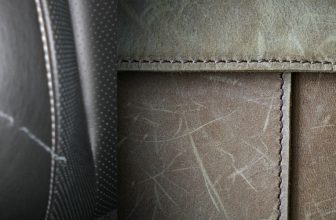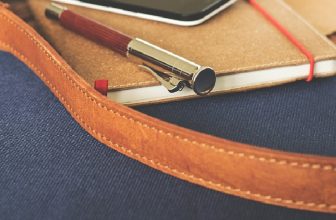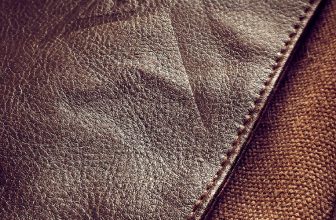How to Fix Discolored Patent Leather
Discoloration on patent leather can be unsightly and ruin the appearance of your shoes, handbags, or any other item made from this material. While it is not always possible to prevent discoloration, there are ways to fix it if it does occur.
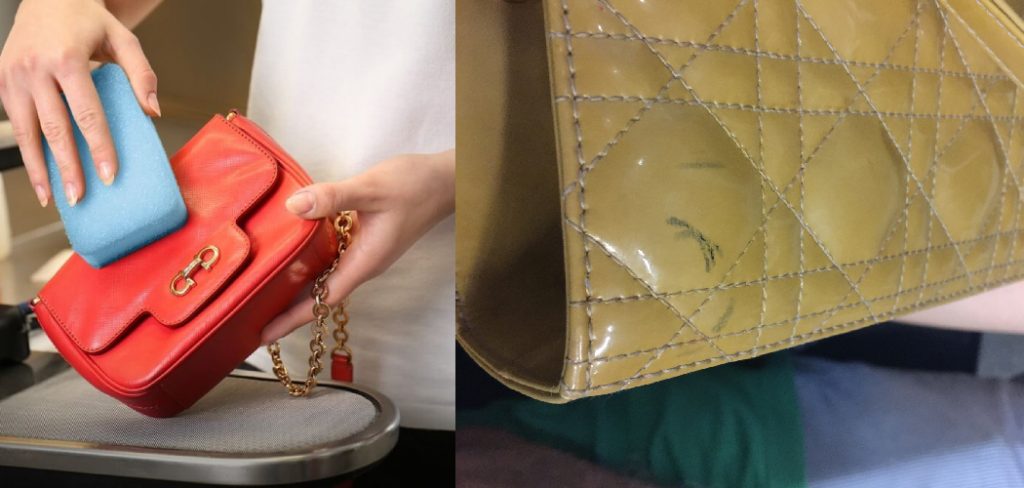
In this article, we will explore some of the most common methods for how to fix discolored patent leather. We will also discuss why patent leather may become discolored in the first place and offer some tips for avoiding this issue. Let’s get started!
What is Patent Leather?
Patent leather is a type of leather that has been coated with a glossy finish, typically made from polyurethane or lacquer. This gives the material its characteristic shine and makes it more resistant to water and stains.
You may have seen patent leather used in shoes, handbags, jackets, and other fashion items. It is also commonly used in furniture upholstery and car interiors due to its durability and easy maintenance.
Why Does Patent Leather Become Discolored?
There are several reasons why patent leather may become discolored:
Exposure to Sunlight:
Just like any other material, patent leather can fade when exposed to direct sunlight.
Exposure to Heat:
High temperatures can cause the gloss on patent leather to crack, leading to discoloration.
Moisture:
Excessive moisture can cause the coating on patent leather to soften and change color.
Contact with Other Materials:
Some materials, such as certain types of fabrics or dyes, may transfer onto patent leather and cause discoloration. Additionally, certain chemicals or cleaning products may also cause discoloration if they are not compatible with patent leather.
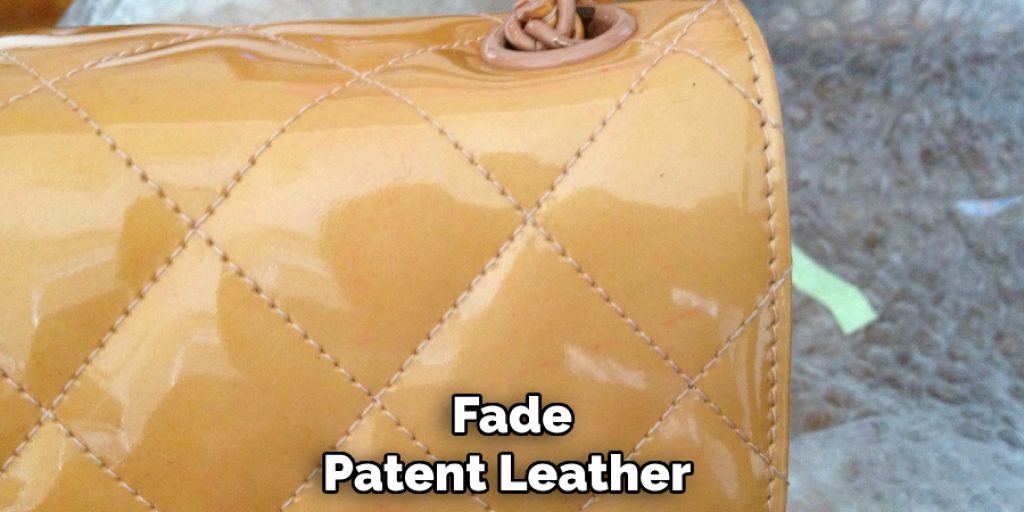
Five Common Reasons That Causes Discolored Patent Leather:
1. Prolonged Exposure to Sunlight:
Patent leather is made of a type of coated leather that has a high shine. The coating is typically made of polyurethane or varnish, which can break down when exposed to sun ultraviolet (UV) rays. This can cause the patent leather to become discolored, dull, and cracked.
You can prevent discoloration due to sunlight by storing patent leather items away from direct sunlight when not in use. If you need to wear or use your patent leather item outside, consider using a UV protectant spray specifically designed for this type of material.
2. Poor Quality of Leather:
If the leather used to make the patent leather item is of poor quality, it is more likely to discolor. In addition, poor-quality leather is often thinner and less durable, making it more susceptible to damage from sunlight and other environmental factors.
To avoid this issue, always look for patent leather items made from high-quality leather and do your research on the manufacturer before making a purchase.
3. Lack of Maintenance:
Discolored patent leather can also be the result of a lack of maintenance. If you don’t regularly clean and condition your patent leather, it will look dull and discolored. Be sure to clean your patent leather with a soft, damp cloth and a mild soap or leather cleaner. You should also condition your patent leather regularly with a quality leather conditioner to make it look its best.
It is also essential to properly store your patent leather items in a cool, dry place when not in use. Avoid storing them in plastic bags or containers, as this can trap moisture and cause discoloration.
4. Improper Storage:
If you store your patent leather in an area that is too hot or too cold, it can cause the leather to discolor. Patent leather should be stored in a cool, dry place. If you must store it in a warmer environment, keep it in a bag or container that will protect it from the heat.

You should also avoid stacking patent leather items on top of each other, as this can cause the coating to crack and lead to discoloration. But if you do have to stack them, place a soft cloth between each item to protect the coating.
5. Environmental Factors:
Several environmental factors can cause patent leather to discolor. These include but are not limited to sunlight, heat, humidity, and contact with oily substances. It is important to store patent leather products in a cool, dry place away from direct sunlight or heat sources to prevent discoloration. If patent leather comes into contact with an oily substance, it is important to wipe it off immediately with a clean, dry cloth.
It is also a good idea to regularly clean and condition your patent leather items, as this can help prevent discoloration caused by environmental factors.
10 Ways on How to Fix Discolored Patent Leather:
1. Use a Leather Conditioner:
A leather conditioner can help restore the natural oils in the leather and protect it from future damage. Be sure to test the conditioner on a small area first to make sure it does not darken the leather. Apply the conditioner with a soft cloth and let it sit for a few minutes before wiping off any excess.
You can also use a leather moisturizing cream or oil to help restore the shine and color of your patent leather item. The key is to use a product specifically designed for patent leather and follow the instructions carefully.
2. Use a White Vinegar Solution:
Mix equal parts white vinegar and water in a bowl. Dip a clean cloth into the mixture and gently rub it into the affected areas of the leather. Allow the mixture to dry on the leather for about 30 minutes before wiping it off with a dry cloth.
It is important to note that vinegar can have a strong smell, so it is best to do this in a well-ventilated area. You should also test the solution on a small, inconspicuous area first to make sure it does not damage or discolor the leather.

3. Use a Lemon Juice Solution:
Lemon juice is a natural bleaching agent that can be used to lighten darkened patent leather. Mix equal parts lemon juice and water, then apply the solution to the affected area with a clean cloth. Allow it to sit for several minutes before wiping it away with a damp cloth. Repeat as necessary until the discoloration has lightened.
It is important to note that lemon juice can also have a bleaching effect on colors, so it is best to test the solution on a small area first.
4. Try a Baking Soda Paste:
If the lemon juice isn’t doing the trick, you can try a baking soda paste. Just mix equal parts baking soda and water to form a thick paste, then apply it to the discolored area. Allow it to sit for several minutes before wiping it off with a damp cloth.

You may need to repeat this process a few times to achieve the desired results, so be sure to test it on a small area first. There is a risk of the baking soda causing additional discoloration or damage to the patent leather.
5. Use Rubbing Alcohol:
Rubbing alcohol can also be used to lighten discoloration on patent leather. Simply apply it to the affected area with a clean cloth and rub it gently. Allow it to dry for several minutes before wiping it away with a dry cloth. You may need to repeat this process several times to lighten the discoloration completely.
It is important to note that rubbing alcohol can be drying and may cause cracks in the patent leather, so use it with caution. You should also test it on a small, inconspicuous area first.
6. Use a Glycerin Solution:
Glycerin is often used as a moisturizer in leather products and can be effective in restoring luster to dull, dry patent leather. To use, mix one-part glycerin with two parts water in a bowl. Dip a clean cloth into the mixture and rub it over the entire surface of the patent leather. Allow the glycerin to soak in for at least 20 minutes, then buff the leather with a soft cloth to bring back its shine.
It is important to note that glycerin can darken leather, so it is best to test it on a small area first and use it with caution. You should also avoid using this method too frequently, as it can lead to a build-up of glycerin on the leather.

7. Apply a Patent Leather Dressing:
There are many commercially available dressings specifically designed for patent leather. These products can help to achieve a high-gloss finish and can also be used to protect the leather from future damage. Test the dressing on a small area first to ensure it does not darken the leather. Follow the instructions carefully for the best results.
It is important to note that overuse of patent leather dressing can cause a build-up on the leather and make it prone to cracking. It is best to only use this method as needed.
8. Use Shoe Polish:
Shoe polish can also restore shine and luster to patent leather. Apply a small amount of polish to a clean cloth and rub it into the leather in a circular motion. Allow the polish to dry for several minutes before buffing it off with a soft cloth. Repeat as necessary until the desired results are achieved. Be sure to use a colorless polish or one that closely matches the color of your patent leather item.
You should avoid using shoe polish on light-colored patent leather, as it may cause discoloration. It is also important to test it on a small, inconspicuous area first.
9. Use Saddle Soap:
Saddle soap is a mild cleansing agent that can clean and condition patent leather. Wet a clean cloth with warm water and add a small amount of saddle soap. Rub the cloth over the surface of the leather in a circular motion, then rinse it off with clean water. Buff the leather dry with a soft cloth. Repeat as necessary until the leather is clean and shiny.
It is important to note that saddle soap can darken leather, so it is best to test it on a small area first. It may also cause the leather to become stiff, so it is important to follow up with a leather conditioner or moisturizer.
10. Hire a Professional:
If you have tried all of the above methods and still can’t get the results you want, you may need to hire a professional leather cleaner. These experts have the knowledge and experience necessary to clean and restore even the most badly stained patent leather. When choosing a professional leather cleaner, ask about their experience with cleaning and restoring patent leather. You should also get an estimate of the cost before making a final decision.

Following these tips and techniques can help you restore the shine and luster to your patent leather items, making them look brand new again. It is important to test any solution or method on a small, inconspicuous area first and use caution when working with chemicals or abrasive materials. With proper care, your patent leather items can maintain their beautiful appearance for years to come.
Tips:
- Always test solutions on a small area first before using them on the entire item.
- Avoid overuse of any cleaning or conditioning method, as it can lead to a build-up on the leather.
- When using chemicals or abrasive materials, use caution and follow instructions carefully.
- Consider taking your patent leather items to a professional cleaner if all other methods fail.
- Regularly cleaning and conditioning your patent leather items can help to prevent discoloration and maintain their shine.
- Avoid leaving patent leather items in direct sunlight, as this can cause fading and discoloration over time.
- store your patent leather items in a cool, dry place to prevent damage from humidity or moisture.
- Use a soft, dry cloth to gently wipe away dirt and debris from patent leather before trying any cleaning or conditioning methods. Overall, proper care and maintenance can help your patent leather items look their best and last for years to come. So the next time you notice some discoloration on your favorite patent leather shoes or handbag, don’t panic – try one of these methods and see the difference it can make.
Frequently Asked Questions:
Q: Can I Use These Methods on Colored Patent Leather?
A: Some of the methods, such as lemon juice and saddle soap, may cause discoloration on certain colors of patent leather. It is best to test the solution on a small area first before using it on the entire item. It is also a good idea to use a colorless solution, such as glycerin or shoe polish, to avoid any potential discoloration.
Q: Can I Use These Methods on Patent Leather Shoes?
A: Yes, these methods can be used on patent leather shoes. However, it is important to test the solution on a small area first before using it on the entire shoe. This is especially important for methods such as rubbing alcohol and shoe polish, which may cause discoloration. You should also avoid using these methods too frequently, as they can cause a build-up on the leather.
Q: Can I Use These Methods on Cracked Patent Leather?
A: Some of these methods, such as glycerin and patent leather dressing, can help moisturize and condition cracked patent leather. However, it is important to be gentle when applying these solutions and to avoid overuse, as they may cause further damage to the leather. It is also important to regularly clean and condition patent leather items to prevent cracking in the first place.
Q: How Often Should I Use These Methods?
A: The frequency of these methods will vary depending on the condition of your patent leather item and how often you use it. It is best to use these methods sparingly, only when needed. Overuse of any method can cause damage to the leather and make it prone to cracking or discoloration. Regular cleaning and conditioning are also important in maintaining the shine and luster of patent leather items.
Q: Can I Use These Methods on Faux Patent Leather?
A: Yes, these methods can be used on faux patent leather. However, it is important to note that faux leather may not react the same way as genuine leather, so it is best to test the solution on a small area first. You should also follow any care instructions provided by the manufacturer of your faux patent leather item.
Overall, it is best to be cautious and gentle when caring for faux patent leather to avoid any damage or discoloration. So, follow these tips and enjoy the glossy shine of your patent leather items for many years to come!
Conclusion:
The reason patent leather becomes discolored over time is that the surface layer of the material, which is made up of a plastic polymer, begins to wear away. This leaves the colored dyes beneath the surface exposed and these can start to fade or run. You can try to restore your patent leather shoes, including using commercial products or home remedies.
The best way to prevent your patent leather shoes from becoming discolored in the first place is by taking proper care of them. If you have any questions about how to fix discolored patent leather, please don’t hesitate to contact us. We would be happy to help!


